Wenyuan Yang
SoK: Large Language Model Copyright Auditing via Fingerprinting
Aug 27, 2025Abstract:The broad capabilities and substantial resources required to train Large Language Models (LLMs) make them valuable intellectual property, yet they remain vulnerable to copyright infringement, such as unauthorized use and model theft. LLM fingerprinting, a non-intrusive technique that extracts and compares the distinctive features from LLMs to identify infringements, offers a promising solution to copyright auditing. However, its reliability remains uncertain due to the prevalence of diverse model modifications and the lack of standardized evaluation. In this SoK, we present the first comprehensive study of LLM fingerprinting. We introduce a unified framework and formal taxonomy that categorizes existing methods into white-box and black-box approaches, providing a structured overview of the state of the art. We further propose LeaFBench, the first systematic benchmark for evaluating LLM fingerprinting under realistic deployment scenarios. Built upon mainstream foundation models and comprising 149 distinct model instances, LeaFBench integrates 13 representative post-development techniques, spanning both parameter-altering methods (e.g., fine-tuning, quantization) and parameter-independent mechanisms (e.g., system prompts, RAG). Extensive experiments on LeaFBench reveal the strengths and weaknesses of existing methods, thereby outlining future research directions and critical open problems in this emerging field. The code is available at https://github.com/shaoshuo-ss/LeaFBench.
ATRI: Mitigating Multilingual Audio Text Retrieval Inconsistencies by Reducing Data Distribution Errors
Feb 22, 2025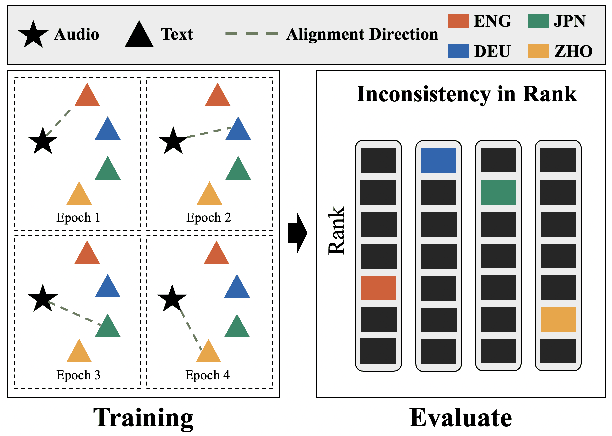
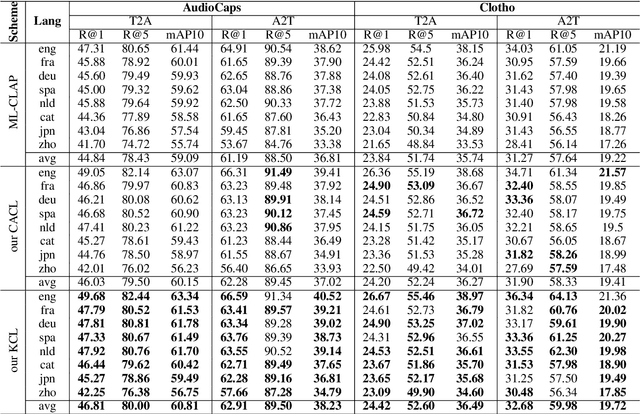
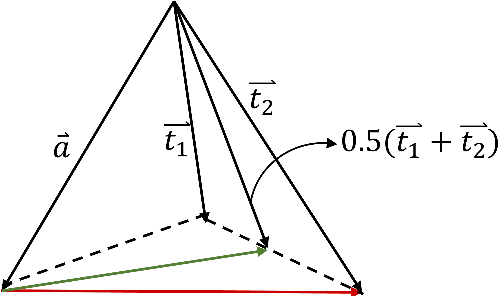
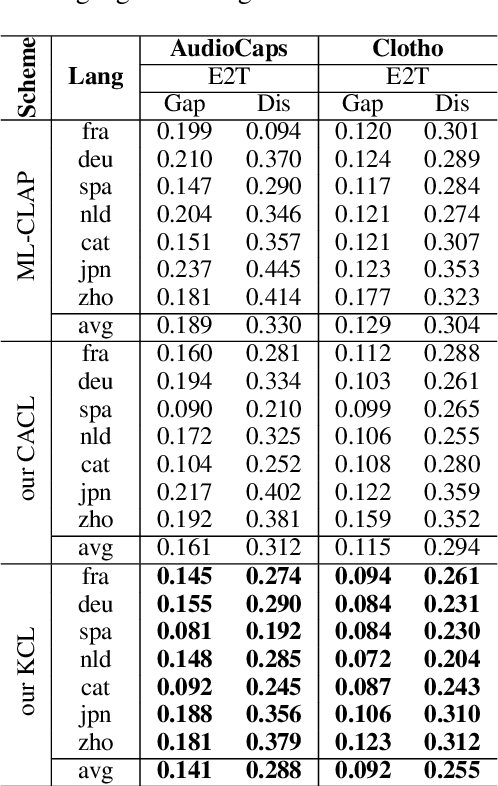
Abstract:Multilingual audio-text retrieval (ML-ATR) is a challenging task that aims to retrieve audio clips or multilingual texts from databases. However, existing ML-ATR schemes suffer from inconsistencies for instance similarity matching across languages. We theoretically analyze the inconsistency in terms of both multilingual modal alignment direction error and weight error, and propose the theoretical weight error upper bound for quantifying the inconsistency. Based on the analysis of the weight error upper bound, we find that the inconsistency problem stems from the data distribution error caused by random sampling of languages. We propose a consistent ML-ATR scheme using 1-to-k contrastive learning and audio-English co-anchor contrastive learning, aiming to mitigate the negative impact of data distribution error on recall and consistency in ML-ATR. Experimental results on the translated AudioCaps and Clotho datasets show that our scheme achieves state-of-the-art performance on recall and consistency metrics for eight mainstream languages, including English. Our code will be available at https://github.com/ATRI-ACL/ATRI-ACL.
Let Real Images be as a Judger, Spotting Fake Images Synthesized with Generative Models
Mar 25, 2024Abstract:In the last few years, generative models have shown their powerful capabilities in synthesizing realistic images in both quality and diversity (i.e., facial images, and natural subjects). Unfortunately, the artifact patterns in fake images synthesized by different generative models are inconsistent, leading to the failure of previous research that relied on spotting subtle differences between real and fake. In our preliminary experiments, we find that the artifacts in fake images always change with the development of the generative model, while natural images exhibit stable statistical properties. In this paper, we employ natural traces shared only by real images as an additional predictive target in the detector. Specifically, the natural traces are learned from the wild real images and we introduce extended supervised contrastive learning to bring them closer to real images and further away from fake ones. This motivates the detector to make decisions based on the proximity of images to the natural traces. To conduct a comprehensive experiment, we built a high-quality and diverse dataset that includes generative models comprising 6 GAN and 6 diffusion models, to evaluate the effectiveness in generalizing unknown forgery techniques and robustness in surviving different transformations. Experimental results show that our proposed method gives 96.1% mAP significantly outperforms the baselines. Extensive experiments conducted on the widely recognized platform Midjourney reveal that our proposed method achieves an accuracy exceeding 78.4%, underscoring its practicality for real-world application deployment. The source code and partial self-built dataset are available in supplementary material.
RobWE: Robust Watermark Embedding for Personalized Federated Learning Model Ownership Protection
Feb 29, 2024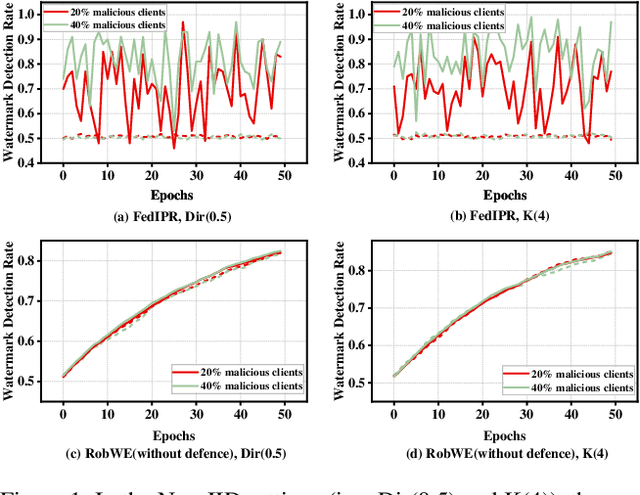



Abstract:Embedding watermarks into models has been widely used to protect model ownership in federated learning (FL). However, existing methods are inadequate for protecting the ownership of personalized models acquired by clients in personalized FL (PFL). This is due to the aggregation of the global model in PFL, resulting in conflicts over clients' private watermarks. Moreover, malicious clients may tamper with embedded watermarks to facilitate model leakage and evade accountability. This paper presents a robust watermark embedding scheme, named RobWE, to protect the ownership of personalized models in PFL. We first decouple the watermark embedding of personalized models into two parts: head layer embedding and representation layer embedding. The head layer belongs to clients' private part without participating in model aggregation, while the representation layer is the shared part for aggregation. For representation layer embedding, we employ a watermark slice embedding operation, which avoids watermark embedding conflicts. Furthermore, we design a malicious watermark detection scheme enabling the server to verify the correctness of watermarks before aggregating local models. We conduct an exhaustive experimental evaluation of RobWE. The results demonstrate that RobWE significantly outperforms the state-of-the-art watermark embedding schemes in FL in terms of fidelity, reliability, and robustness.
Inter-frame Accelerate Attack against Video Interpolation Models
May 11, 2023Abstract:Deep learning based video frame interpolation (VIF) method, aiming to synthesis the intermediate frames to enhance video quality, have been highly developed in the past few years. This paper investigates the adversarial robustness of VIF models. We apply adversarial attacks to VIF models and find that the VIF models are very vulnerable to adversarial examples. To improve attack efficiency, we suggest to make full use of the property of video frame interpolation task. The intuition is that the gap between adjacent frames would be small, leading to the corresponding adversarial perturbations being similar as well. Then we propose a novel attack method named Inter-frame Accelerate Attack (IAA) that initializes the perturbation as the perturbation for the previous adjacent frame and reduces the number of attack iterations. It is shown that our method can improve attack efficiency greatly while achieving comparable attack performance with traditional methods. Besides, we also extend our method to video recognition models which are higher level vision tasks and achieves great attack efficiency.
FedZKP: Federated Model Ownership Verification with Zero-knowledge Proof
May 10, 2023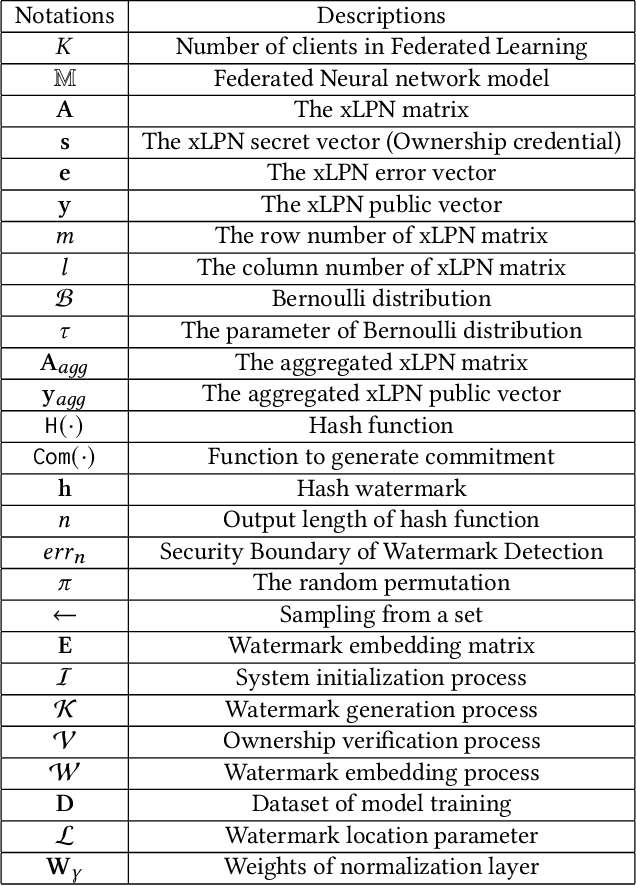


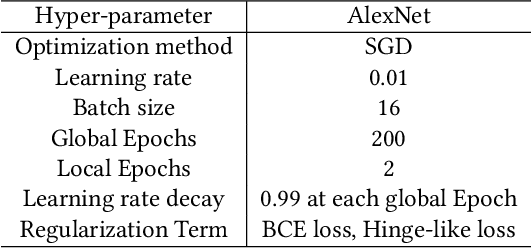
Abstract:Federated learning (FL) allows multiple parties to cooperatively learn a federated model without sharing private data with each other. The need of protecting such federated models from being plagiarized or misused, therefore, motivates us to propose a provable secure model ownership verification scheme using zero-knowledge proof, named FedZKP. It is shown that the FedZKP scheme without disclosing credentials is guaranteed to defeat a variety of existing and potential attacks. Both theoretical analysis and empirical studies demonstrate the security of FedZKP in the sense that the probability for attackers to breach the proposed FedZKP is negligible. Moreover, extensive experimental results confirm the fidelity and robustness of our scheme.
FedSOV: Federated Model Secure Ownership Verification with Unforgeable Signature
May 10, 2023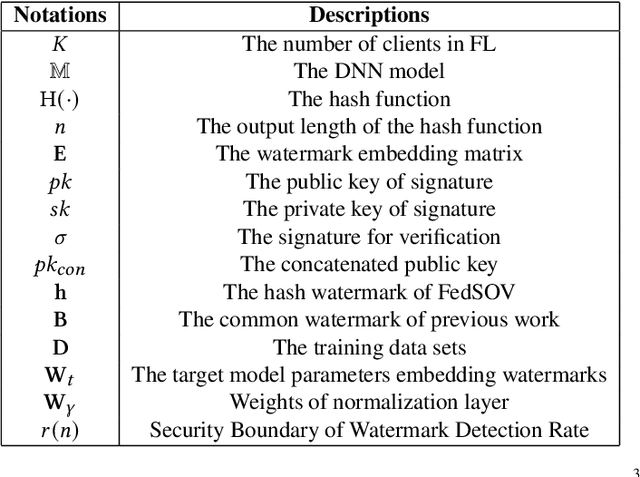
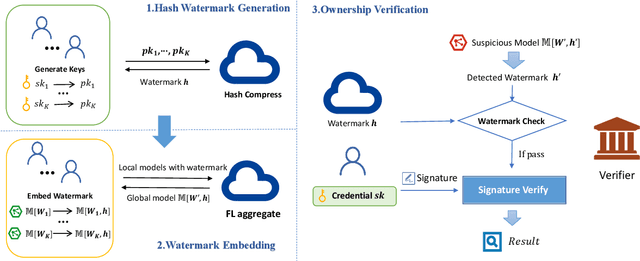
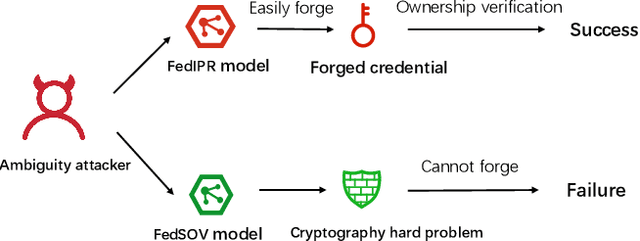

Abstract:Federated learning allows multiple parties to collaborate in learning a global model without revealing private data. The high cost of training and the significant value of the global model necessitates the need for ownership verification of federated learning. However, the existing ownership verification schemes in federated learning suffer from several limitations, such as inadequate support for a large number of clients and vulnerability to ambiguity attacks. To address these limitations, we propose a cryptographic signature-based federated learning model ownership verification scheme named FedSOV. FedSOV allows numerous clients to embed their ownership credentials and verify ownership using unforgeable digital signatures. The scheme provides theoretical resistance to ambiguity attacks with the unforgeability of the signature. Experimental results on computer vision and natural language processing tasks demonstrate that FedSOV is an effective federated model ownership verification scheme enhanced with provable cryptographic security.
FedTracker: Furnishing Ownership Verification and Traceability for Federated Learning Model
Nov 14, 2022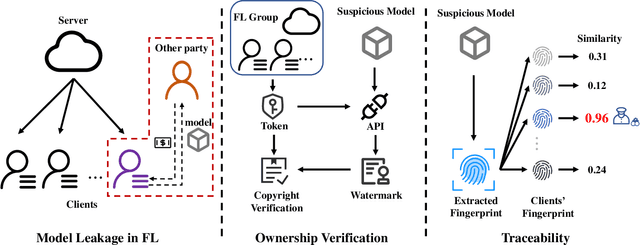

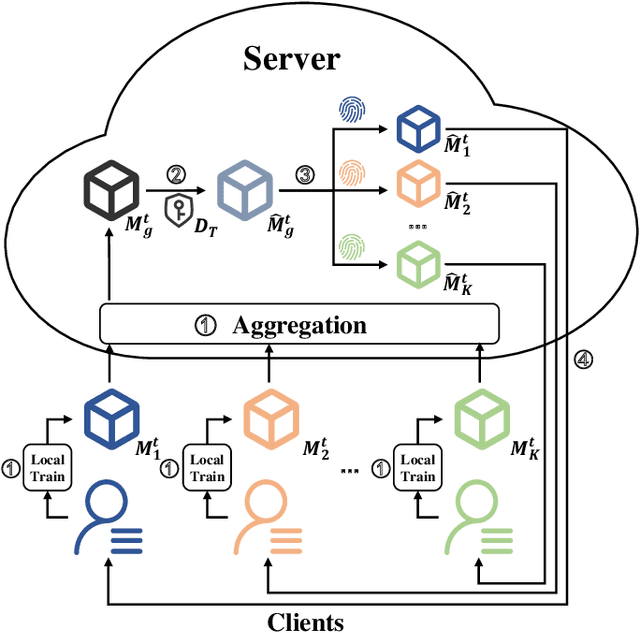

Abstract:Copyright protection of the Federated Learning (FL) model has become a major concern since malicious clients in FL can stealthily distribute or sell the FL model to other parties. In order to prevent such misbehavior, one must be able to catch the culprit by investigating trace evidence from the model in question. In this paper, we propose FedTracker, the first FL model protection framework that, on one hand, employs global watermarks to verify ownerships of the global model; and on the other hand, embed unique local fingerprints into respective local models to facilitate tracing the model back to the culprit. Furthermore, FedTracker introduces the intuition of Continual Learning (CL) into watermark embedding, and proposes a CL-based watermark mechanism to improve fidelity. Experimental results show that the proposed FedTracker is effective in ownership verification, traceability, fidelity, and robustness.
Watermarking in Secure Federated Learning: A Verification Framework Based on Client-Side Backdooring
Nov 14, 2022



Abstract:Federated learning (FL) allows multiple participants to collaboratively build deep learning (DL) models without directly sharing data. Consequently, the issue of copyright protection in FL becomes important since unreliable participants may gain access to the jointly trained model. Application of homomorphic encryption (HE) in secure FL framework prevents the central server from accessing plaintext models. Thus, it is no longer feasible to embed the watermark at the central server using existing watermarking schemes. In this paper, we propose a novel client-side FL watermarking scheme to tackle the copyright protection issue in secure FL with HE. To our best knowledge, it is the first scheme to embed the watermark to models under the Secure FL environment. We design a black-box watermarking scheme based on client-side backdooring to embed a pre-designed trigger set into an FL model by a gradient-enhanced embedding method. Additionally, we propose a trigger set construction mechanism to ensure the watermark cannot be forged. Experimental results demonstrate that our proposed scheme delivers outstanding protection performance and robustness against various watermark removal attacks and ambiguity attack.
 Add to Chrome
Add to Chrome Add to Firefox
Add to Firefox Add to Edge
Add to Edge